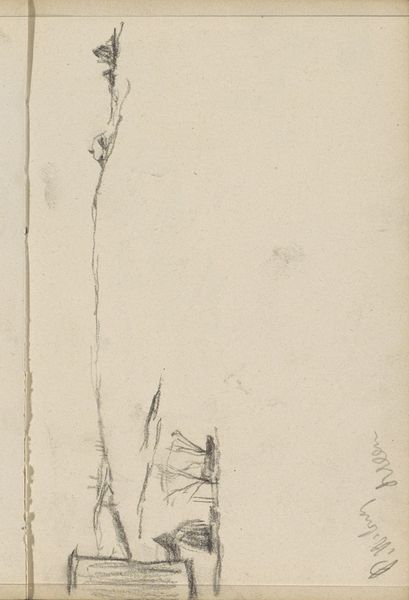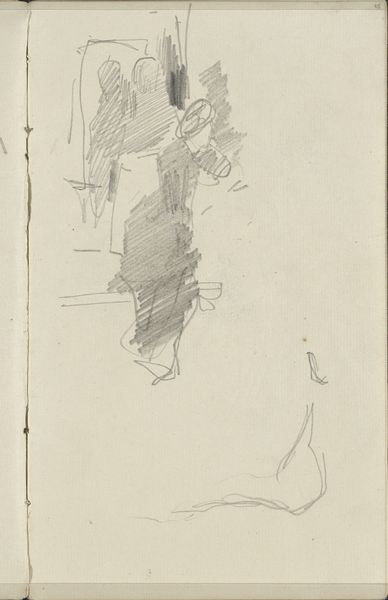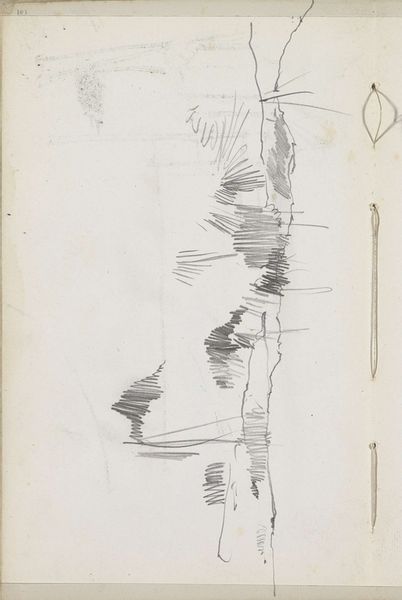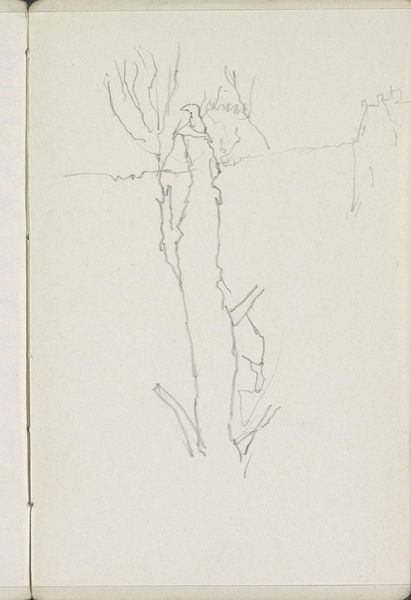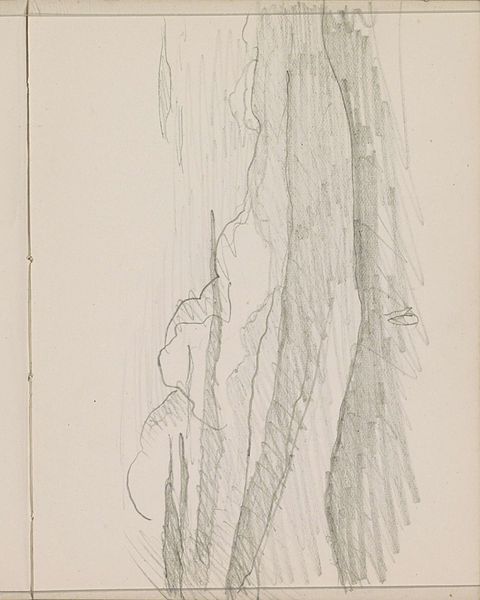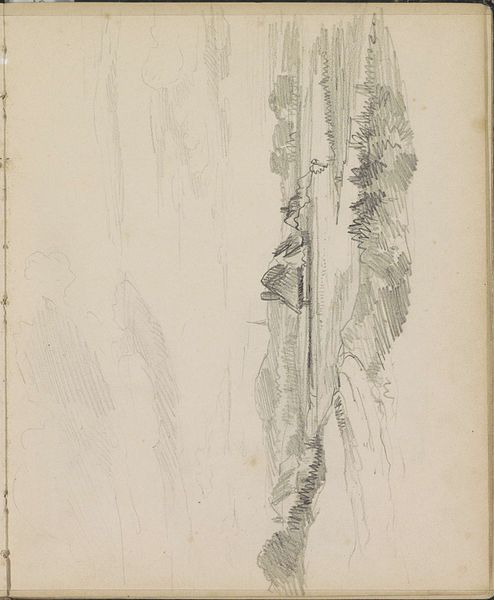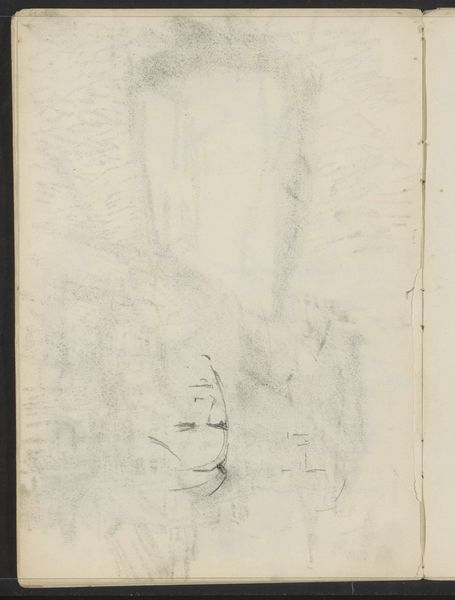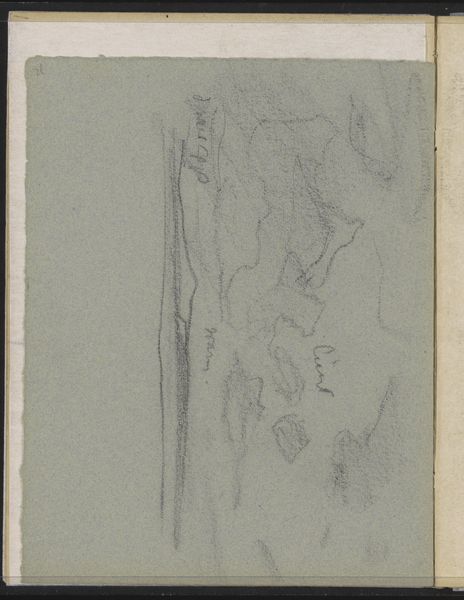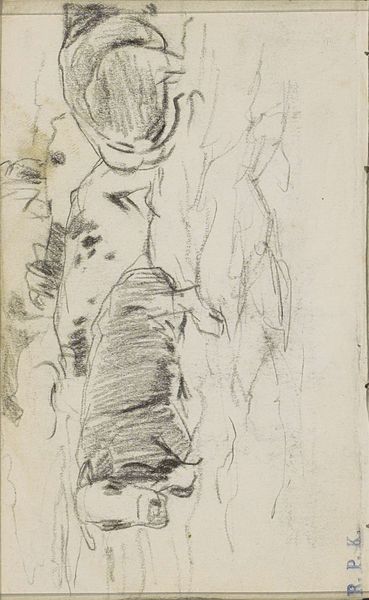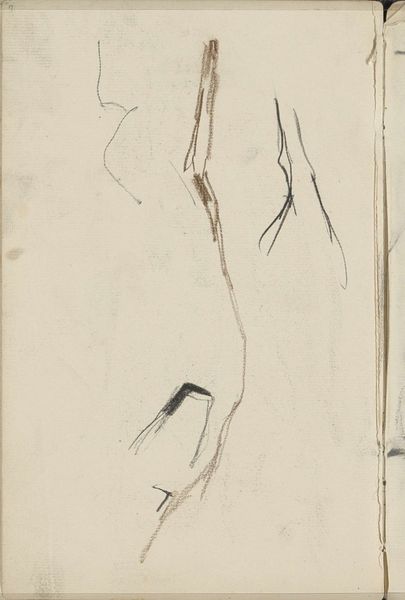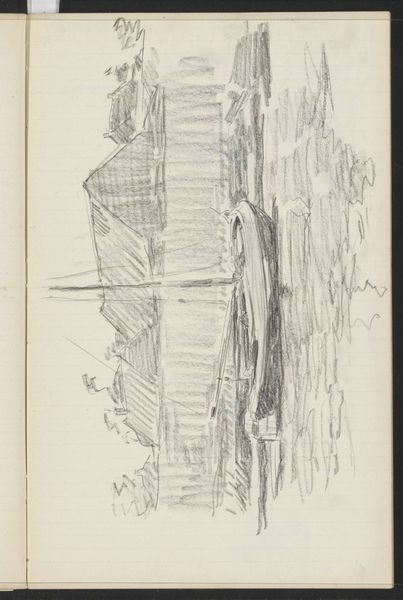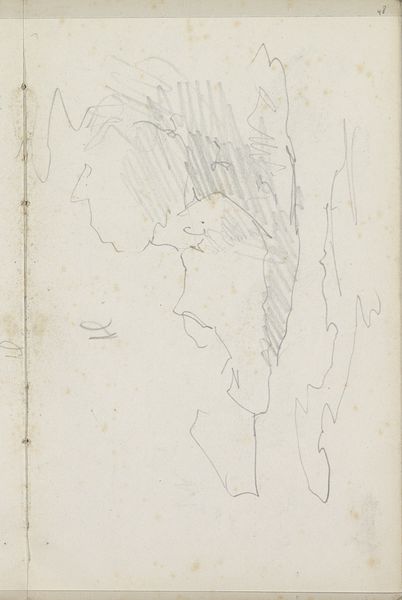
drawing, pencil
#
drawing
#
light pencil work
#
quirky sketch
#
impressionism
#
pen sketch
#
incomplete sketchy
#
landscape
#
personal sketchbook
#
ink drawing experimentation
#
pen-ink sketch
#
pencil
#
sketchbook drawing
#
sketchbook art
#
initial sketch
Copyright: Rijks Museum: Open Domain
Editor: Here we have George Hendrik Breitner’s "Landschap, mogelijk een duinlandschap", created between 1880 and 1882. It’s a pencil drawing, a quick sketch really. There’s something very immediate about it, almost like a fleeting thought. What do you see in this piece beyond the simple landscape? Curator: I see a capture of a moment, yes, but within a very specific socio-political context. Breitner, known for documenting Amsterdam's working class, was deeply invested in realism. This sketch, though seemingly simple, can be interpreted as part of his broader project to represent the world as it was, not as idealized landscapes were traditionally presented. What might the "duinlandschap" – the dune landscape – represent in relation to the rapidly industrializing Dutch society of that time? Editor: I guess maybe a counterpoint? A reminder of a more natural, less constructed world? Curator: Precisely. And within that reminder, there could be an implicit critique. Who had access to these landscapes? Who was being displaced by industrialization? These questions bring a critical lens to even the most seemingly innocent sketch. Breitner often depicted marginalized figures. Could this landscape be viewed as a space inhabited by those on the periphery, a space of refuge or perhaps, even resistance? Editor: So, even a quick sketch can be read as having a socio-political dimension? It's interesting to consider how even seemingly simple landscape drawings from that era can be linked to societal power structures and social commentary. Curator: Absolutely. Considering the social and historical contexts allows us to unearth hidden narratives within even the simplest artistic expressions. I think reflecting on how places are being depicted through time can give insights to their changing purpose as societies progress.
Comments
No comments
Be the first to comment and join the conversation on the ultimate creative platform.
